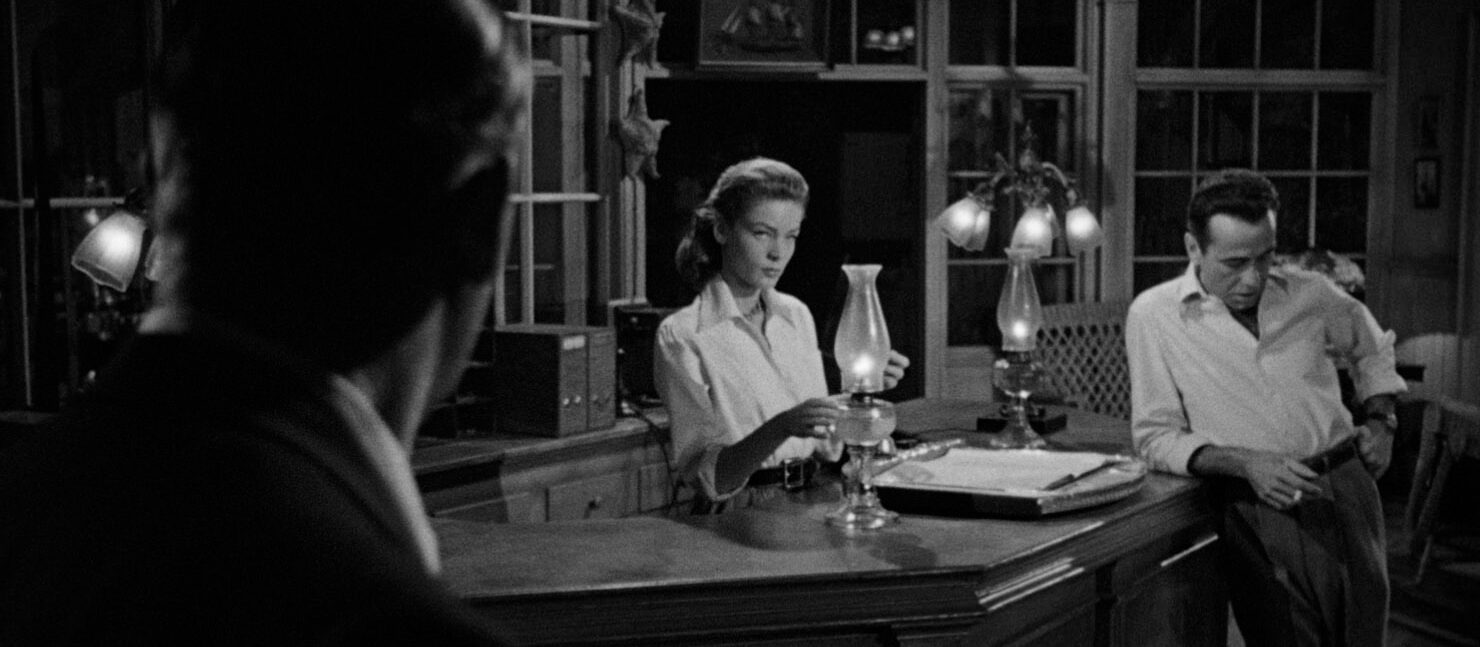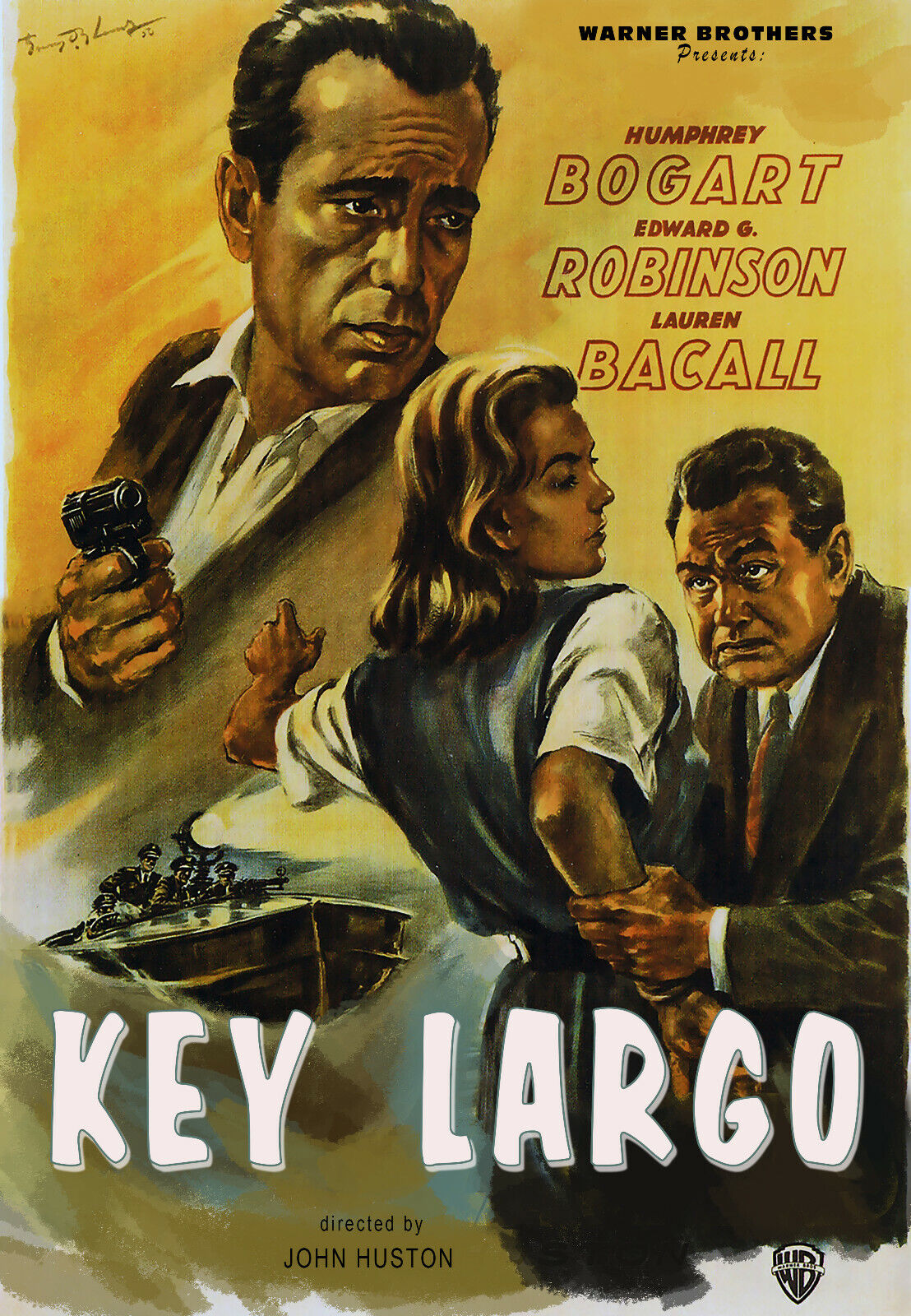

“When your head says one thing and your whole life says another, your head always loses.”
In the earliest pairings of Bogart and Bacall—namely, To Have and Have Not and The Big Sleep, both directed by Howard Hawks—there is an incredible on screen chemistry between the two stars. After that pair of classics the actors’ offscreen romance prompted Bogart to divorce his third wife and make Bacall his fourth. Interestingly, in Key Largo, their fourth and final collaborative effort, John Huston fails (or really doesn’t even try) to make much use of their considerable appeal as a combo. I think the closest they get to physical affection is when Bogart briefly touches his wife’s hair.
Instead, Huston hands the movie over to Edward G. Robinson, who plays fugitive gangster Johnny Rocco, a character modeled after Lucky Luciano and Al Capone. Rocco and his gang (Thomas Gomez, Harry Lewis, William Haade, Dan Seymour) are holed up in a Florida Keys hotel owned and operated by a generous, wheelchair-bound old man (Lionel Barrymore) and his dead son’s widow (Bacall). Bogart’s Frank McCloud—a variation on the familiar Bogart persona (cynical, disillusioned, individualistic), hewing especially close to his work in Casablanca—had commanded the dead man in WWII and is here out of a sense of duty. As a nasty hurricane approaches and then begins buffeting the hotel, the gangsters reveal themselves and take hostages as they wait for a contact to arrive, prompting a claustrophobic society-in-miniature standoff within the confines of the meager facility that cinematographer Karl Freund shoots with dexterity and Max Steiner scores with a wistful touch. Incidentally, the narrative bears many similarities to Archie Mayo’s The Petrified Forest, which starred Bogart in the gangster role before he became a leading man.
Better to be a live coward than a dead hero.
Robinson dominates the film with an assertive performance. Where McCloud feels almost like a passive peripheral presence until the final act, Rocco exerts his will throughout—threatening the old man and the widow, chomping his cigars, bossing his henchmen around, cruelly dismissing the locals native Americans who seek shelter from the storm (leading to a tragic subplot), forcing his alcoholic former moll (Claire Trevor) to sing a capella before she’s allowed to have a drink, then leaving her behind when his crew sets out for Cuba on a small boat. Even when a gun is surreptitiously placed in McCloud’s hand, he hesitates to use it to wrest control of the situation away from Rocco.
And yet for all that, Rocco isn’t portrayed as an especially formidable foe. His heyday was during the Prohibition, just as McCloud’s glory came during the War and has now been replaced by guilt and shame. In that sense, one might comprehend a certain grudging respect or even commiseration between the two men like that shared between Randolph Scott and Richard Boone in The Tall T. But where McCloud has grown apathetic, Rocco has become anxious and edgy; as a result, he’s liable to lash out without warning. In time, McCloud works up the gumption to act, perhaps inspired by an arresting moment when Barrymore—the actor himself afflicted by arthritis and a broken hip—rises from his chair in righteous anger.
Mostly confined to a small set, Key Largo nevertheless tackles a potent blend of themes with an introspective tone which overshadows the winsome cast and taut direction without diminishing them.